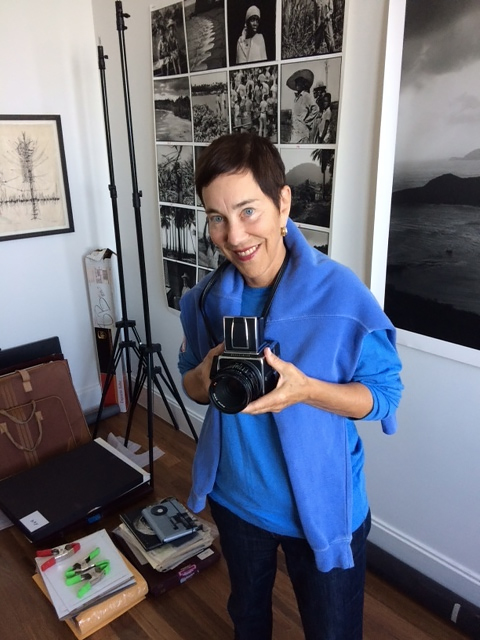Margo Baumgarten Davis is a photographer, educator and author of several photographer's books.
Margo was raised in Connecticut and has lived for over 30 years in Palo Alto, California. She attended Bennington College, spent time at the Sorbonne studying French literature, and graduated from University of California, Berkeley. It was at UC Berkeley where she met her first husband Gregson Davis and traveled frequently to his home country of Antigua. She has a daughter, Anika and a son, Julian.
Davis has produced photography in Paris, Italy, Nigeria and in the Caribbean, and has done a significant amount of portraiture. Davis has photographed Saul Bellow, Maxine Kingston, Tillie Olsen, Ursula K. Le Guin, Diane Johnson, and Kay Boyle.
In Nigeria, Davis produced a number of photographs of the Fula people.
Davis has spent time lecturing at Stanford on photojournalism with the communications department. She has also taught photography at University of California, Berkeley, and University of California, Santa Cruz.
In 2017, Margo's book Antigua: Photographs 1967-1973 was published by Nazraeli Press. At interview, Margo said she produced the book after hearing interest expressed at an exhibit in Antigua.
Antigua
As young artists, we are drawn to projects that help us understand truths about who we are and what we want to become. When we are just starting out, that process is intuitive, at times random; it is also intense and thrilling. This was my experience when I began photographing in Antigua in 1967.
It was the very beginning of a long journey in photography that is evolving to this day, 40 years later. From my first days in Antigua, I was overwhelmed by the timeless beauty of the place and especially by the strength of its people. I was born on the East Coast of the United States, a few thousand miles to the north. I was welcomed into a world and culture different from my own.
Starting with the Antigua photographs in this exhibit, my life's journey has been with a camera and with an eye for the landscape of the human face. Although I was often moved to photograph the beaches and sunsets, and the shapely old sugar mills and estate houses of the island, I am primarily a portraitist. Drawn to the people of the villages that dotted the island, my early inspirations came from the faces you see here.
Whenever possible, I asked permission to photograph - because the power of my portrait style depended on the comfort of the people that I was photographing. Since those early years, my interest in humanistic photography has propelled me into the world of various cultures. I have exhibited those photographs internationally and produced four books. However, it was on the island of Antigua where my passion for photography first began to flourish. Antigua Black; Portrait of an Island People was created and published in 1973.
I want to thank again all the Antiguans who helped make this collection possible.
Margo Davis
Discover All American